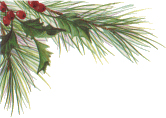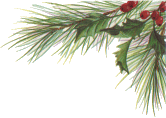Frequently Asked Questions
Why Fraser Fir
Wreaths and Trees?
Fraser fir is commonly used in wreaths and
for Christmas trees because the needles are thick, deep green and long
lasting. They also create a lovely pine fragrance. White
pine Christmas trees use to be all the rage but have quite gone out of
style mostly because they turn brown quicker and shed. It is much
nicer to have a wreath or tree that holds up through the holidays than trying to
replace something. Our Fraser Fir wreaths and trees will last longer with
proper care. Please see our
Wreath Care section to keep them fresher longer.
Why Fresh
Wreaths?
Fresh wreaths make great holiday gifts as well as decorations for home,
church and community. They are environmentally friendly as we tip
trees that grow back without having to cut trees down. Best of
all, they look very pretty and smell great. Fresh Fraser Fir
wreaths make great gifts. You can have a wreath delivered right to
your gift recipient's door in time for them to decorate for the
holidays. What a nice surprise that they will be talking about all
season.
How long will my fresh wreath last?
Your wreath should last several
months. Wreaths do better in cooler, moist climates. If
you live in a hot, dry area, you can help your wreath to last longer.
Keep your fresh wreath out of the sun and mist it every other day.
If you live in a cooler area, you do not need to do anything to keep
your wreath looking good throughout the holiday season. Our fraser
fir wreaths hold up well because the tips are not cut until the wreath
is ready to be made. Usually a day before your order ships.
Fraser fir itself has the type of needles that don't shed very quickly
and that look greener longer.
How do you ship?
Individual wreath orders are
shipped via USPS Priority Mail.
What size wreath do I need?
The most popular wreath size is 24"
because this size looks good on a standard 32" door. Larger
wreaths are used on larger doors and smaller wreaths are often used to
decorate inside the home or other areas outside the home.
Fraser Fir
Christmas Trees vs Fake Christmas Trees
Why use a real
tree?
Economic Advantages:
Real Christmas trees are grown on United States family farms, making an
important economic contribution to many rural communities in America.
Fake trees are made in Korea, Taiwan and China and importing artifical
trees contributes to the US trade deficit. Help promote economic
growth in the US.
Environmental Advantages:
Real Christmas trees absorb carbon dioxide and other harmful greenhouse
gases and release fresh oxygen into the air. A real tree has a
wonderful fragrance. One acre of real Christmas trees provides the
daily oxygen needed for 18 people. There are about 500,000 acres
of Christmas trees in the US which provide oxygen for 9 million people
daily.
Fake Christmas trees are
made from non-renewable plastics. The manufacture of petroleum
based plastics use up natural resources. The manufacturing of
plastic and metal components in fake Christmas trees consume energy and
create pollution.
For every real tree
harvested, another one is planted in its place to ensure a steady supply
year after year. Christmas tree fields support turkey, quail,
songbirds, rabbits and deer.
The avergae use of a fake
Christmas tree is only 6 or 7 years. Eventually they all go to the
landfill as garbage. Fake Christmas trees are not biodegradable.
The plastics and metals that they contain, including lead, will remain
in our landfills for centuries.
Real Christmas trees are
an all-American renewable, recyclable resource. After the
holidays, real trees are chipped into biodegradable mulch, which
replenishes soil in landscapes, parks, and schools. Most
communities offer recycling programs. Recycled real Christmas
trees are also used as wind and water barriers at beaches and river beds
to fight sand and soil erosion. They protect our water supplies,
and provide refuge for wildlife. When sunk in ponds, they provide
excellent refuge and feeding areas for fish.
Health Effects:
Some consumers have suffered an allergic reaction to materials in their
fake trees. Some consumers are allergic to dust that accumulates
on surfaces of real trees grown outside. You can wash most
allergens off by spraying the tree with water before bringing it inside.
Are fake trees really
fireproof? No! The artificial tree, which was advertised as
"flame retardant," did resist the flames for an amount of time, but then
was engulfed in flames and projected significant heat and toxic smoke,
containing hydrogen chloride gas and dioxin.
The safest Christmas tree
is a fresh, well-watered tree. A real tree has never started a
fire. Faulty Christmas lights, candles, and fireplaces can start
tree fires.
|



